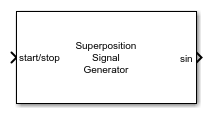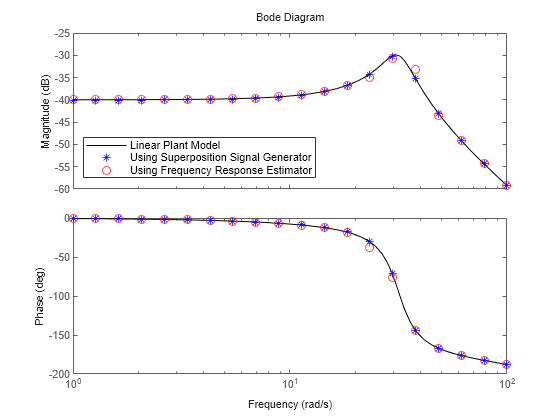Superposition Signal Generator
Generate superposition input signal for plant frequency response estimation
Since R2024b
Libraries:
Simulink Control Design /
Signal Generation
Description
Use this block to generate superimposed sinusoidal input perturbation signals. This block allows you to generate scalar or vector signals including three-phase sin, cos, or both (sincos) signals. Three-phase signals are helpful when you want to identify frequency response of three-phase AC power systems. For example, you can use the generated signal to measure impedance of a power inverter which connects renewable energy resources to three-phase AC power grids
This block is helpful when you want to generate perturbation signals to inject in your plant models in desktop simulation or on hardware through code generation. You can then collect the plant response data to the perturbation signal and perform custom processing to identify plant characteristics.
Examples
Ports
Input
Output
Parameters
Extended Capabilities
Version History
Introduced in R2024b

